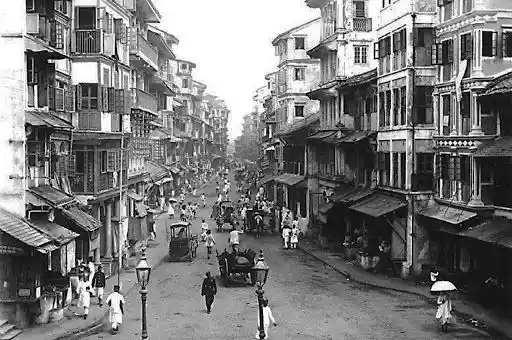The Historic Bhendi Bazaar Gharana Of Bombay
Aziz Nazan, who sung the iconic Urdu song the ‘Jhoom barabar, jhoom sharabi’, was among the legendary Qawwals who once congregated at the Wazeeria Hotel in the Bhendi Bazaar, Bombay. Abdul Rahman Kanchwala, Habib Painter, Rani Roop Lata, Ibrahim Iqbal, Ismail Azad, Usuf Azad,, and Munna Shaokath Ali were the other performers in this realm of qawwali. You would be surprised to know that Lata Mageshkar, the legendary classical singer of India, had trained in Bhendi Bazaar Gharana. Let’s find out more about this historic gharana.

Bhendi Bazaar gharana of Bombay (image source: livewire.in)
The origin of Indian classical music can be traced back to the Vedic era. It has been woven into a rich tapestry of harmony owing to the contribution of the numerous conquerors and rulers who came to India over time, as well as the intricate interactions between people of different races and civilizations. There are countless ‘ragas’ associated with different times of the day. For instance a different raga for sunrise and sunset, some intended solely for the silence of the night, others to welcome the new day at dawn.
Everyone who could contribute one way or the other was welcomed, from snake charmers to acrobats to theatre groups, you name it. There was dancing, and for the affluent, opera was imported from Europe. There was no shortage of mainstream entertainment, but Bombay also made a point of supporting classical music. The place became a popular destination for musicians, and some chose to make it their permanent home.
The Bombay Harbour created a dormitory-style housing development behind Crawford Market, a posh area of the time, to address the housing demands of the working class. The British called the neighbourhood "Behind the bazaar," which eventually became known as Bhendi Bazaar in local dialect.
In 1870, the three sons of Ustad Dilawar Hussain Khan, Chajju Khan, Nazir Khan and Khadim Hussain Khan travelled to Bombay from Uttar Pradesh’s Bijnor and decided to settle down in the Bhendi bazaar neighbourhood. Two years later, around 1890, they established the Bhendi Bazaar Gharana. As is only natural for great cities, their chosen metropolis served as their artistic muse and source of inspiration. The Khan brothers created their own style of singing, which may be recognized by its slow, open-throat singing. They used combinations of a small number of notes to highlight the raga's mellifluousness in their improvisations, which were based on the Khandmer or Meerkhand principle of Hindustani classical music. The gharana was known for its emphasis on breath control and singing long passages in a single go while using the 'aakaar' to present khyals in an open voice with clear intonation.
They practiced individually defined rhythm play and included some ragas from Carnatic music into their bandishes, which were lovely fusions of lyrics, notes, and speed. When their music started to be passed down through the centuries to their pupils, the Khan brothers gained a reputation as the "Bhendi Bazaar-waleys."
It’s interesting how the gharanas mixed and how their styles influenced the gayaki of future gharanas. Aman Ali Khan, son of Chajju Khan, had a unique talent of using the khatkas and gamaks from the Carnatic style, and he followed his ancestor’s musical traditions to establish himself as a legendary Hindustani classical music composer. He is credited with writing 400 or so bandishes that perfectly capture the subtleties and magnificence of the Bhendi Bazaar gayaki. Two prominent vocalists in the Hindi cinema industry, Lata Mangeshkar and Manna Dey, were trained under Ustad Aman Ali Khan.
However, the Bhendi Bazaar Gharana didn’t become as popular as its contemporary gharanas like Kirana Gharana, Agra Gharana, which have dominated the Hindustani Classical. This was because the members of the gharana have constantly refused to give commercial performances, keeping the gharana hidden from the public eye. They believed that music should be used for spiritual rather than commercial purposes. Lack of written materials or publications discussing the Gharana and its distinctive characteristics was another issue with this Gharana. Knowledge was mostly transmitted to the disciples orally.
The old Bhendi Bazaar neighbourhood is currently being revitalized through a construction plan on a scale never seen in India. Skyscrapers will house residents, while malls and arcades will become the new locations for street-level enterprises. Old structures that have weathered the test of time are being torn down, and the passageways that once resonated with the sounds of the Bhendi Bazaar gayaki are now filled with the noises of drills and jackhammers while the fear of its history being eradicated increases with each passing day.


